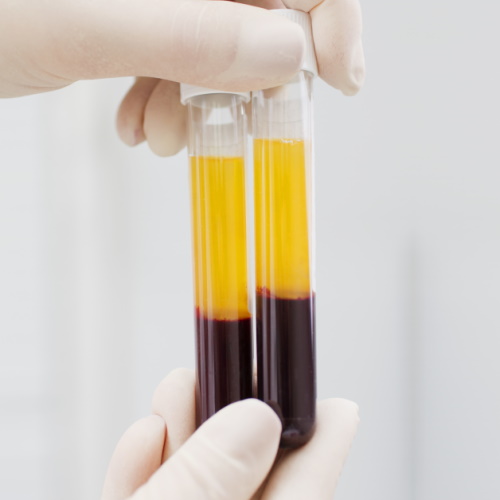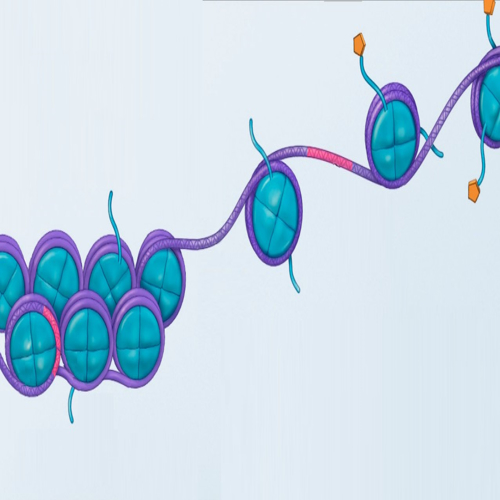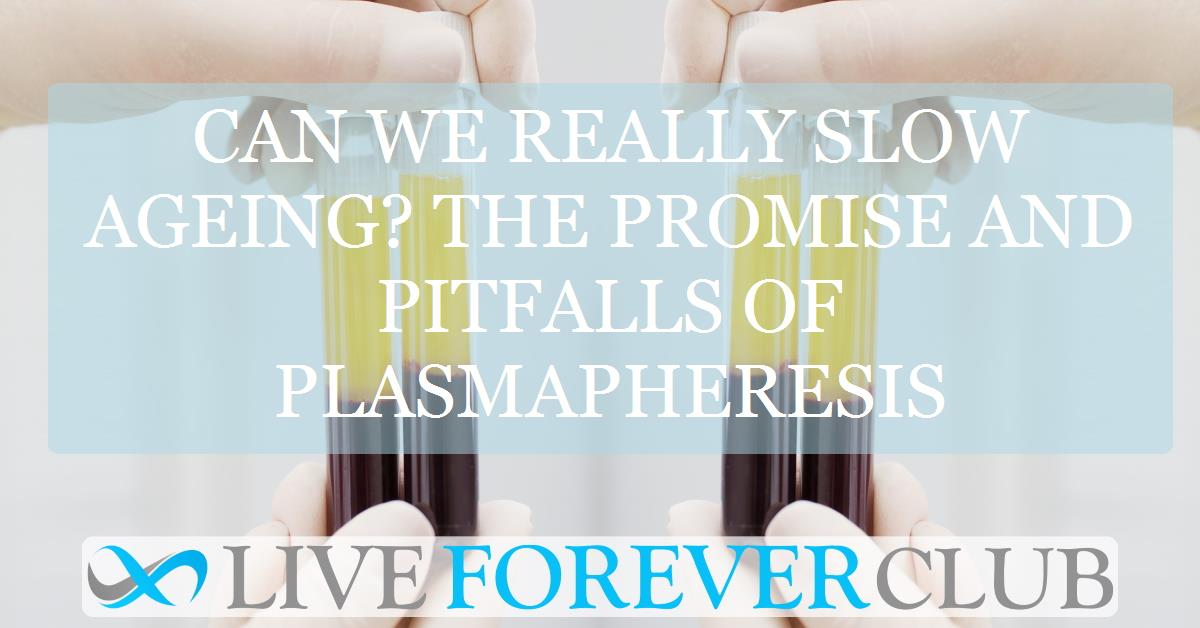For as long as humans have looked in mirrors, we’ve wished to stay young. Kings sought elixirs, sailors chased fountains of youth, and today, scientists look inside our cells for clues. We now know that ageing is not just about grey hair or wrinkles. It runs much deeper, involving every organ, every cell, and even our DNA.
In this quest, the idea of changing what flows in our veins has gained traction. Imagine a simple procedure that clears out harmful factors from your blood and slows down ageing. It sounds almost magical. One procedure that raised hopes is plasmapheresis, a method used for decades to treat serious diseases. Some believed it might do much more — perhaps even roll back the biological clock. But does it really work? A recent clinical trial in the Czech Republic offers some answers.
Understanding plasmapheresis and why it matters
Plasmapheresis removes plasma from your blood. Plasma is the liquid part that carries hormones, proteins, waste products, and signalling molecules. Doctors usually use this treatment to help patients with autoimmune diseases or severe infections. During plasmapheresis, plasma is separated and discarded, while the remaining cells return to your body.
Animal studies have shown that replacing old plasma with fresh solutions can make older mice stronger, improve brain function, and support tissue repair. These findings sparked excitement in the anti-ageing world. Could the same process rejuvenate humans? That question became the heart of this new study.
The clinical trial setup and who took part
The recent study enrolled healthy volunteers between 40 and 60 years old. None of them had serious illnesses. Scientists divided them into two groups. One group underwent eight plasmapheresis sessions over 18 weeks. The second group started later and served as a comparison. Researchers collected blood samples before, during, and after the sessions.
They analysed the samples for various markers. They checked cholesterol levels, protein levels, and important minerals. They also studied DNA methylation clocks, a modern tool to estimate biological age. These clocks don’t just count birthdays. Instead, they track chemical changes in DNA linked to cellular ageing.
How DNA methylation clocks measure ageing
Inside every cell, chemical tags called methyl groups attach to DNA. These tags control which genes turn on or off and change as we grow older. Scientists can use these patterns to estimate how “old” your cells appear, a concept called biological age. Several clocks exist, including Horvath’s clock, GrimAge, and DunedinPACE.
If an intervention slows ageing, these clocks should show a lower biological age after treatment. This was the main hope behind testing plasmapheresis. Scientists wanted to see if removing plasma would clear harmful signals and make cells act younger.
Changes in cholesterol and proteins after treatment
The study found some expected shifts. Total cholesterol, non-HDL cholesterol, and triglycerides all dropped after plasmapheresis. Lower cholesterol often means a lower risk of heart disease, which seems positive. But there’s more to the story.
Albumin and total protein levels fell too. Albumin is crucial. It maintains fluid balance, transports hormones, and protects tissues from damage. Repeated depletion might weaken the body’s defences and slow recovery from injuries. In this study, no one faced severe immediate consequences, but the long-term impact is unknown.
Surprising shifts in minerals and vitamins
Calcium and phosphorus levels decreased, especially among women. Calcium loss can raise the risk of osteoporosis over time. Potassium levels rose, which could affect heart and nerve functions. Interestingly, vitamin D levels increased. Researchers think this change reflected the spring season and greater sun exposure rather than the procedure itself.
Homocysteine, an amino acid tied to heart disease and cognitive decline, increased after plasmapheresis. This finding surprised researchers. High homocysteine levels can damage blood vessels and promote clotting. Future studies may need to address this by adding vitamin supplements to the protocol.
Effects on blood cells and the immune system
Blood cells also responded to the sessions. Red cell distribution width (RDW) and mean corpuscular haemoglobin concentration (MCHC) both rose. These changes might reflect shifts in red blood cell production or stress on blood cells. Some types of white blood cells decreased, while monocytes increased. The immune system clearly reacts to plasmapheresis in complex ways, which scientists still need to understand fully.
These shifts might indicate an underlying inflammatory or stress response. The immune changes could have both short-term and long-term consequences, especially if someone repeats the procedure often.
Hormonal fluctuations in men and women
Unexpected hormonal changes appeared too. In men, oestrogen and progesterone levels went up after multiple sessions. Thyroxine, a thyroid hormone, also increased. In women, progesterone rose. These hormonal shifts might result from the body’s stress response or adjustments after plasma removal.
DHEA, often called a “youth hormone,” dropped after sessions. Lower DHEA might mean reduced resilience against stress and ageing. The combined hormonal changes show that the body doesn’t just lose molecules during plasmapheresis — it also reacts and adapts in ways we are only beginning to map.
Did plasmapheresis slow biological ageing?
The core question remains: did participants become biologically younger? The answer, unfortunately, is no. DNA methylation clocks told a different story. Instead of seeing rejuvenation, the clocks showed an increase in biological age. GrimAge, Hannum clock, and DunedinPACE all suggested participants aged faster during the study period.
Why did this happen? One theory is that repeated plasma removal acts as a stressor. Stress can temporarily push biological age upwards. Similar effects appear after surgery or major illnesses. Another possible reason is the lack of albumin replacement. In animal studies that showed benefits, researchers always replaced plasma with albumin. Without it, vital proteins and factors might become too depleted, causing harm rather than healing.
Comparisons to other research findings
Other studies, especially in animals, have shown positive effects. In mice, plasma exchange reduced inflammation, improved brain function, and extended lifespan. But these experiments included albumin replacement and focused on frail or old animals.
In humans, one Chinese study using double filtration plasmapheresis claimed a decrease in biological age. However, that protocol differed significantly. They used different filters, replaced specific proteins, and followed different frequencies. The discrepancies highlight how delicate and complex this intervention is.
Why these findings matter
This study doesn’t close the door on plasma-based therapies. Instead, it teaches caution. Ageing is not a simple on-off switch. Changing one part of the blood affects many other systems. The body’s internal balance, or homeostasis, can become fragile when disrupted too often or too deeply.
The study also reminds us that animal results don’t always translate to humans. Our physiology, lifestyles, and genetic make-up introduce layers of complexity. Even if something works in mice, it might fail in humans or even cause harm.
The potential cardiovascular benefits
Despite disappointing results on biological ageing, some findings offer hope. The reduction in cholesterol levels is significant. High cholesterol remains a major risk factor for heart attacks and strokes worldwide. If plasmapheresis could safely lower cholesterol, it might help people with severe lipid disorders who don’t respond to drugs.
But there’s a catch. Whether these improvements last after stopping plasmapheresis isn’t clear. Plus, the potential risks — like protein depletion or immune changes — might outweigh benefits for healthy people.
Is plasmapheresis safe for the general public?
In the short term, this trial showed that plasmapheresis is relatively safe. No participant experienced severe complications that forced them to quit. But we must view safety cautiously. Repeated protein and mineral losses, hormone shifts, and immune changes might pose long-term dangers.
Many countries now allow frequent plasma donations, driven by demand for plasma-based therapies. This study suggests more research is needed to ensure donor health. Plasma collection centres should consider revising protocols to include replacements or longer intervals between donations.
Where do we go from here?
Future research must refine protocols. Scientists should test the effects of albumin or other plasma replacements. They should experiment with different frequencies, longer follow-ups, and different age groups, including older people or those with metabolic diseases who might benefit more.
Measuring other stress markers like cortisol and inflammatory cytokines might explain why biological age increased. Including lifestyle tracking could help isolate the effects of plasmapheresis from diet, sleep, and activity changes.
Final reflections on the journey to slow ageing
This study challenges the hope that plasmapheresis alone can slow or reverse human ageing. The dream of a plasma-based fountain of youth is not here yet. Instead, we see a reminder of how complex the human body truly is. Removing plasma shifts a delicate balance, affecting proteins, hormones, immune cells, and even our DNA’s chemical signatures.
For now, the best strategies to promote healthy ageing remain the classics: good nutrition, regular exercise, quality sleep, and stress management. Science may one day offer more advanced tools, but we must move carefully, guided by robust human data rather than dreams alone.
Stay curious and cautious as you navigate the world of longevity science. The quest to understand and slow human ageing continues, but shortcuts rarely deliver on their promises. Let evidence guide you, not hype.
The study is published in the journal Scientific Reports. It was led by researchers from Charles University.







